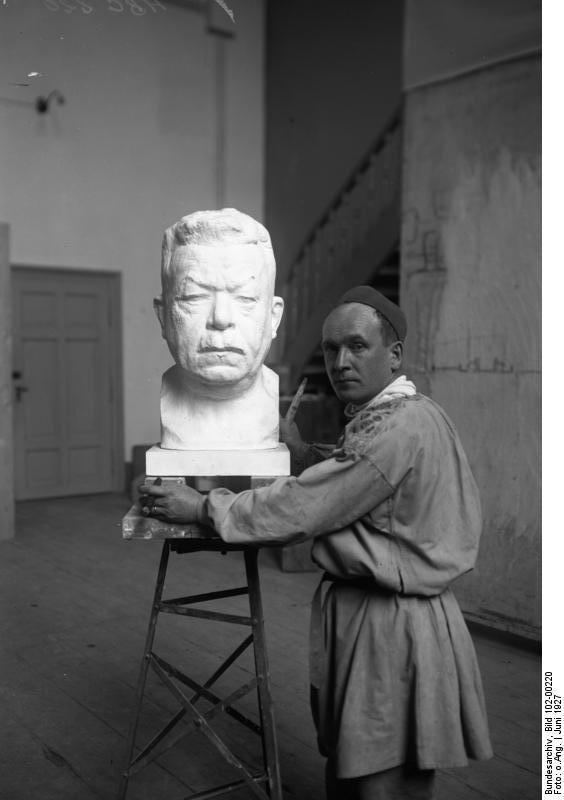Nationality German Period Neoclassicism | Name Bernhard Bleeker Known for Sculpture | |
 | ||
Died March 11, 1968, Munich, Germany | ||
Josef Bernhard Maria Bleeker (26 July 1881 – 11 March 1968) was a German sculptor.
Contents
Life
Bernhard Bleeker was born on 26 July 1881 in Munster, Westphalia, North Germany. After training as a stonemason in Munster and Munich he worked on various Munich building sites. In 1903 Bleeker received his first public contract to build a monument in Miesbach. He built a fountain with a sculpture of Saint Michael slaying the dragon. "This work is still influenced by a typically neobaroque style, represented by his teacher Rumann and other numerous artist-colleagues." Later he came under the influence of Adolf von Hildebrand, probably the most significant sculptor of that time. Bleeker is supposed to be one of the main representatives of the Munich School of Sculptors, a significant bust sculptor and a builder of neo-classical monomuents.
In 1912 he founded with others the "Neue Munchener Secession". In 1918 he started teaching at the Munich Academy and became a full professor ("Ordentlicher Professor") in 1922. "During the Third Reich, Bleeker as a well respected artist often participated in propagandistic exhibitions, for example at the Grose Deutsche Kunstausstellung at the Haus der Deutschen Kunst in Munich." He obtained the order to create a bust of Adolf Hitler (Bust at German Historical Museum). He reworked it several times and up to 1944 25 busts were delivered to the Nationalsozialistische Deutsche Arbeiterpartei (NSDAP). As a result of his connection to the Nazi regime he lost his teaching post at the Munich Academy in 1945. In 1951 he was rehabilitated and became a member of the Academy of Fine Arts in Vienna and an honorary member of the Munich Academy. In 1968 he died in Munich.
Selected works
For a full list see:
